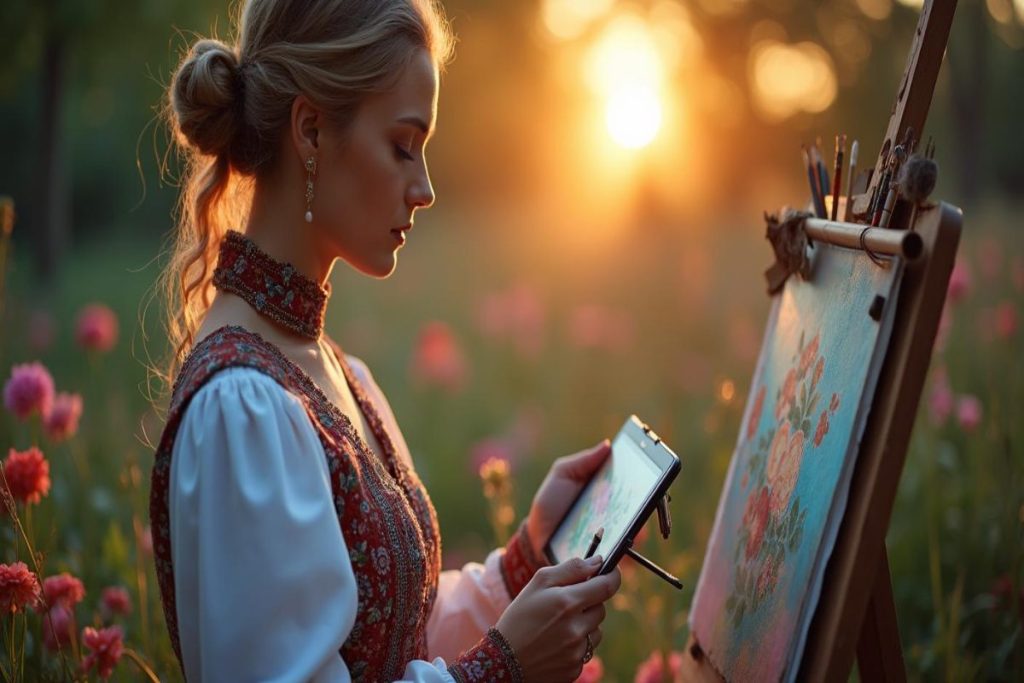The Growth of NFT Art
The world of culture is undergoing a profound transformation with the rise of digital art. This modern art form has redefined how we create, share, and experience artistic expression. As technology continues to evolve, digital art is becoming an integral part of cultural landscapes worldwide. This article explores the most exciting trends and advancements shaping the future of digital art, offering insights into its growing impact.
Non-fungible tokens (NFTs) have revolutionized the art world, providing artists with new ways to monetize their work and connect with audiences. By 2025, NFTs will further integrate into mainstream culture, offering enhanced tools for artists to protect and sell their digital creations securely. Beyond individual pieces, NFTs are being used to create virtual galleries and collections, fostering a deeper appreciation for digital creativity.
Interactive Digital Installations
Interactive installations are pushing the boundaries of traditional art, blending physical spaces with digital elements. These immersive experiences are reshaping how audiences engage with culture, allowing for greater participation and personalization in artistic encounters. Museums and public spaces are increasingly adopting these technologies, making art more accessible and engaging to diverse audiences.
AI-Driven Creativity
Artificial intelligence is playing an increasingly significant role in the creation of digital art. By leveraging AI algorithms, artists are exploring new realms of creativity. This intersection of technology and culture is fostering innovative approaches to artistic expression that were previously unimaginable. AI tools are enabling rapid prototyping, unique visual styles, and collaborative opportunities between humans and machines.
Global Access to Art Through Digital Platforms
Digital platforms have democratized access to art, enabling creators from diverse backgrounds to showcase their work to global audiences. This trend is reshaping the culture industry by breaking down barriers and fostering inclusivity in artistic communities. From virtual exhibitions to online marketplaces, the reach of digital art is now unlimited, connecting artists and collectors in unprecedented ways.
Virtual and Augmented Reality in Art
Virtual reality (VR) and augmented reality (AR) technologies are transforming how we experience art. By immersing viewers in fully interactive environments, these technologies are enhancing the connection between art and culture, offering new ways to explore and interpret creative works. Virtual art installations and AR-enhanced exhibits are attracting younger audiences and broadening the appeal of contemporary art forms.
Sustainability in Digital Art
As digital art continues to grow, sustainability has become a key concern. Artists and platforms are exploring eco-friendly practices, such as reducing the carbon footprint of blockchain-based systems. This reflects a broader shift in culture towards environmentally conscious art production. Energy-efficient methods and carbon offsets are becoming part of the dialogue surrounding digital creativity.
Blurring the Lines Between Digital and Traditional Art
The boundaries between digital and traditional art are becoming increasingly blurred. Hybrid works that combine elements of both forms are gaining popularity, showcasing the synergy between technology and culture. Artists are experimenting with augmented canvases, digital projections, and mixed media installations, redefining what it means to create in the modern era.
The Economic Impact of Digital Art
The rise of digital art is also driving significant economic changes within the art market. With the global reach of online platforms, artists can achieve financial success without traditional gatekeepers. This shift is reshaping the culture industry by creating more equitable opportunities for artists and generating substantial revenue streams through digital sales and collaborations.
Conclusion
The rise of digital art is redefining the landscape of culture in profound ways. From NFTs and AI-driven creations to global accessibility and sustainable practices, the digital art movement is reshaping how we interact with and appreciate artistic expression. As these trends continue to evolve, digital art will remain a dynamic and integral part of modern culture, inspiring new generations of artists and audiences alike. The fusion of tradition and innovation ensures a bright and transformative future for the art world.



